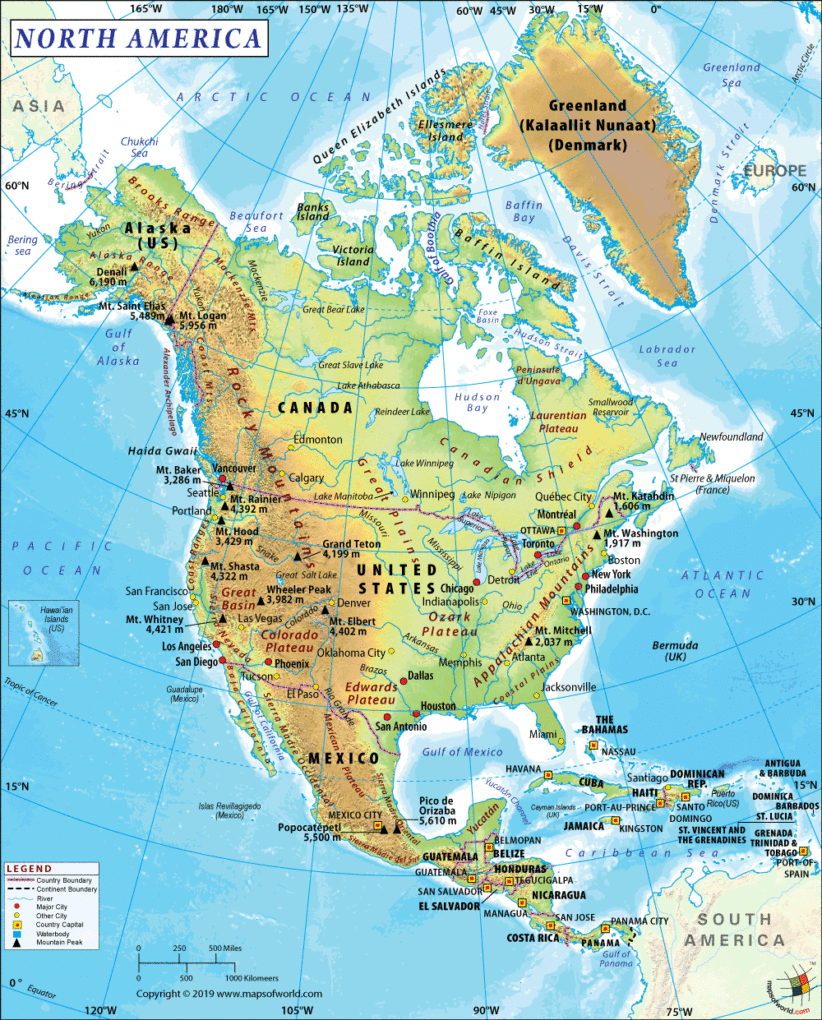When we think about the history of North America, our minds often go straight to the arrival of European colonizers in the 15th and 16th centuries. But North America has a much longer and richer history that predates the arrival of Europeans by thousands of years.
Before colonization, North America was a diverse and vibrant continent, home to a wide variety of indigenous cultures, languages, and ways of life. From the ancient Paleo-Indian peoples who first settled the continent to the great empires of the Aztecs and Incas in Mexico and South America, the history of North America before colonization is one of great complexity and diversity.
In this article, we’ll take a closer look at the pre-colonial history of North America, exploring the different cultures and societies that inhabited the continent long before the arrival of Europeans. We’ll delve into the rich cultural traditions, spiritual beliefs, and social structures of these ancient peoples, and explore the ways in which they shaped the land and each other.
So buckle up and get ready for a journey through time, as we explore the fascinating history of North America before colonization.
Prehistoric North America
Before the arrival of humans, North America was a vast, unspoiled wilderness. But around 15,000 years ago, the first humans arrived on the continent, crossing over from Asia via the Bering land bridge. These early humans, known as Paleo-Indians, were skilled hunters and gatherers who lived off the land.
The Paleo-Indian period lasted from roughly 13,000 BCE to 7,000 BCE and is characterized by distinctive stone tools known as Clovis points. These points were used for hunting and were found throughout North America, suggesting that the Paleo-Indians were a widespread and successful culture.
During the Ice Age, North America was home to a wide variety of large, now-extinct mammals known as megafauna. These included mammoths, giant sloths, and saber-toothed cats, among others. The Paleo-Indians hunted these animals for food, but as the climate warmed and the megafauna began to disappear, the Paleo-Indian way of life began to change.
As the Paleo-Indian period came to an end, new cultures and ways of life began to emerge in North America. The Archaic period, which lasted from roughly 7,000 BCE to 1,000 BCE, was characterized by the development of agriculture, the domestication of animals, and the emergence of more complex social structures.
Despite the changes that occurred during the Archaic period, the Paleo-Indian legacy lived on in the form of the Clovis culture. To this day, the Clovis culture remains a fascinating and mysterious chapter in the history of North America.
Native American Cultures
When most people think of Native American cultures, they often imagine a single, monolithic group of people with similar customs and traditions. However, the reality is far more complex. Before colonization, North America was home to a rich tapestry of cultures, each with their own unique languages, customs, and beliefs.
Some of the most well-known Native American cultures include the Cherokee, Apache, Navajo, and Sioux, but there were many other groups as well, each with their own distinct identities and histories.
One thing that united many Native American cultures was their close relationship with the natural world. For these societies, nature was not something to be conquered or controlled, but rather something to be revered and respected. Many Native American cultures developed complex spiritual beliefs that emphasized the interconnectedness of all living things.
Another important aspect of Native American cultures was their social structure. While each group had their own specific customs and traditions, many shared a system of clans or extended family groups. These clans formed the basis of social organization and were often responsible for various tasks within the community.
Women also played a crucial role in Native American societies. In many cultures, women were responsible for gathering food, preparing meals, and raising children. They also often held positions of spiritual authority and were highly respected members of their communities.
Despite the many differences among Native American cultures, there were also many similarities. For example, many Native American societies placed a high value on oral traditions, passing down stories, myths, and histories from one generation to the next. They also shared a deep reverence for the natural world and a belief in the importance of community and social harmony.

Pre-Columbian Explorers
While Columbus is often credited with “discovering” America, the truth is that there were many other explorers who visited North America before him. These pre-Columbian explorers were often skilled sailors and navigators who traveled great distances in search of new lands, resources, and trade partners.
One of the most well-known pre-Columbian explorers was Leif Erikson, a Norse explorer who is believed to have landed in Newfoundland around the year 1000. Erikson’s voyages were part of a larger pattern of Norse exploration and colonization in the North Atlantic, which included settlements in Greenland and Iceland.
Another famous pre-Columbian explorer was Zheng He, a Chinese admiral who led a series of expeditions to Southeast Asia, India, and East Africa in the early 15th century. Some scholars believe that Zheng He may have also visited North America, though there is no concrete evidence to support this claim.
Perhaps the most fascinating pre-Columbian explorer was the Polynesian navigator, Hui Te Rangiora. According to oral traditions, Hui Te Rangiora and his crew sailed from Polynesia to North America in the 13th century, landing in what is now California. While there is no archaeological evidence to support this claim, it remains a tantalizing possibility.
The stories of these pre-Columbian explorers remind us that the history of North America is not limited to the arrival of European colonizers. Instead, it is a rich and complex tapestry of cultures, peoples, and traditions, spanning thousands of years of human history.
Conclusion
In conclusion, the history of North America before colonization is a fascinating and complex topic, full of rich cultural traditions, innovative explorers, and ancient civilizations. From the Paleo-Indian period to the Archaic era, Native American cultures, and pre-Columbian explorers, North America’s history is a story of resilience, adaptation, and innovation.
By studying and understanding the history of North America before colonization, we can gain a deeper appreciation for the diverse cultures and societies that have called this land home. We can also gain insights into the ways in which human societies have evolved and changed over time, and how they have adapted to different environments and challenges.
Whether we are interested in the history of our own region, or simply curious about the ancient world, the history of North America before colonization is a fascinating subject that offers much to explore and discover.

